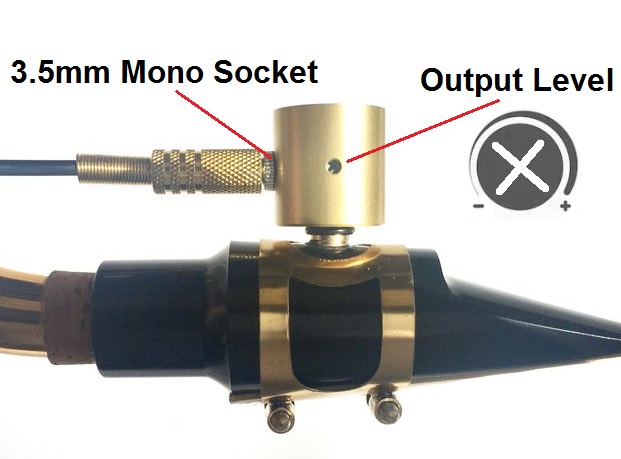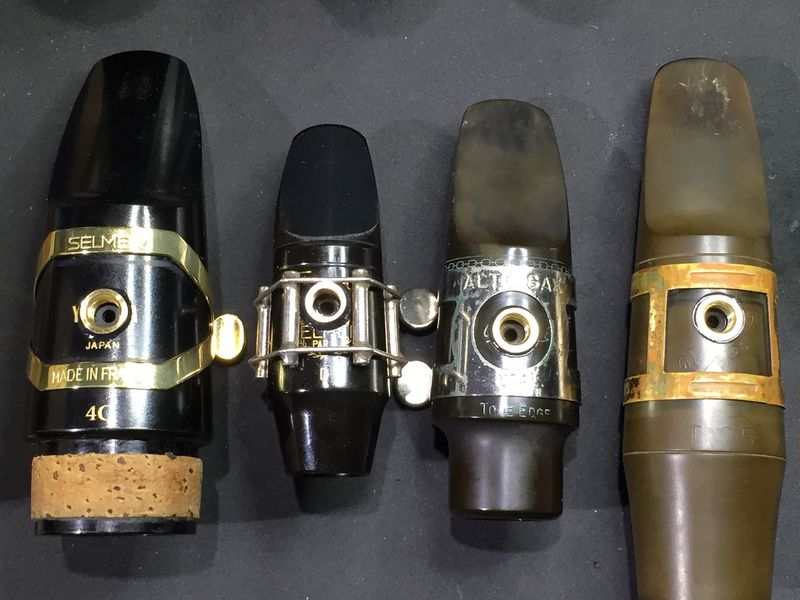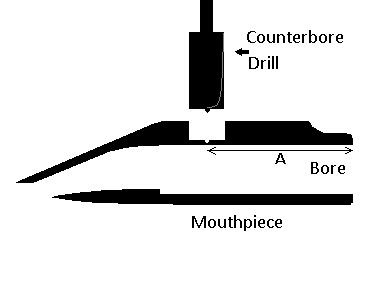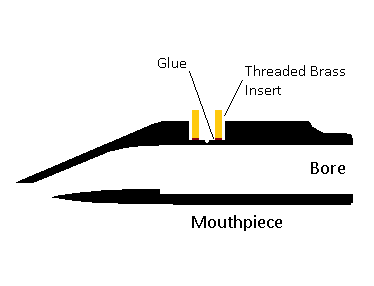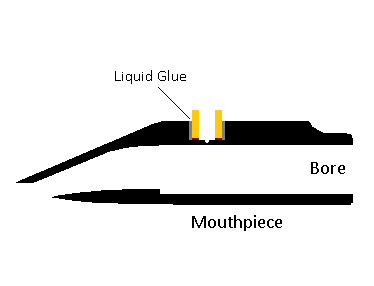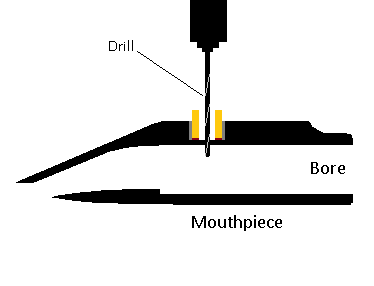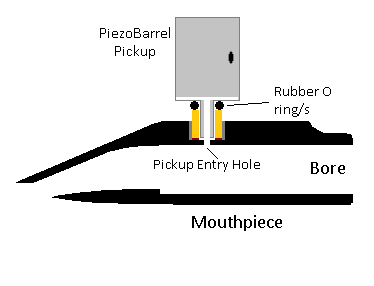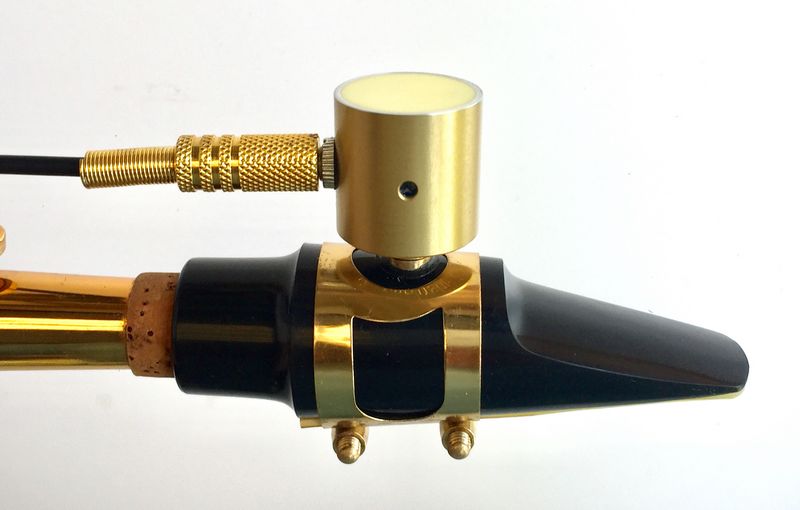Connecting your PiezoBarrel pickup
Please read all instructions before connecting your pickup
Screw-in Pickups have a standard 6mm metric thread on the bottom that screws into a brass thread in the supplied mouthpiece or clarinet barrel. The pickup should be mounted in a position where moisture will not flow into the pickup (at the top of the instrument). A silver stainless steel or brass screw is supplied to block the hole in the mouthpiece or clarinet barrel after the pickup has been removed to allow the instrument to be played when the pickup is not being used.
PiezoBarrel pickups are supplied with a black shielded cable that has a mono 3.5mm (1/8 inch) plug on one end and a 6.35mm (1/4 inch). The 3.5mm plug fits into the 3.5mm socket in the pickup. The 6.35mm plug can be plugged into sound equipment such as a guitar amplifier, mixer (line in, instrument in or unbalanced in), guitar effect pedal input socket or vocal effects pedal unbalanced or line in socket.
The PiezoBarrel output is line level and you may want to turn the output level on the down (turn the adjusting screw anti-clockwise) before connecting to microphone inputs to avoid overloading preamplifier circuits
Before connecting the pickup to sound equipment you should turn volume controls down to zero on the sound equipment. For effect pedals, the pedal should be turned on after the pickup has been attached (this is often achieved by disconnecting the output lead on the pedal).
PiezoBarrel pickups do not require a preamplifier. The output of the pickup should be set to a low level for equipment that is designed for microphone input levels as these devices often include a preamplifier.
The pickup should be removed from the instrument, dried and stored when not in use.
Information on fitting a brass ferrule to your own barrel, mouthpiece or other instrument is covered below.
